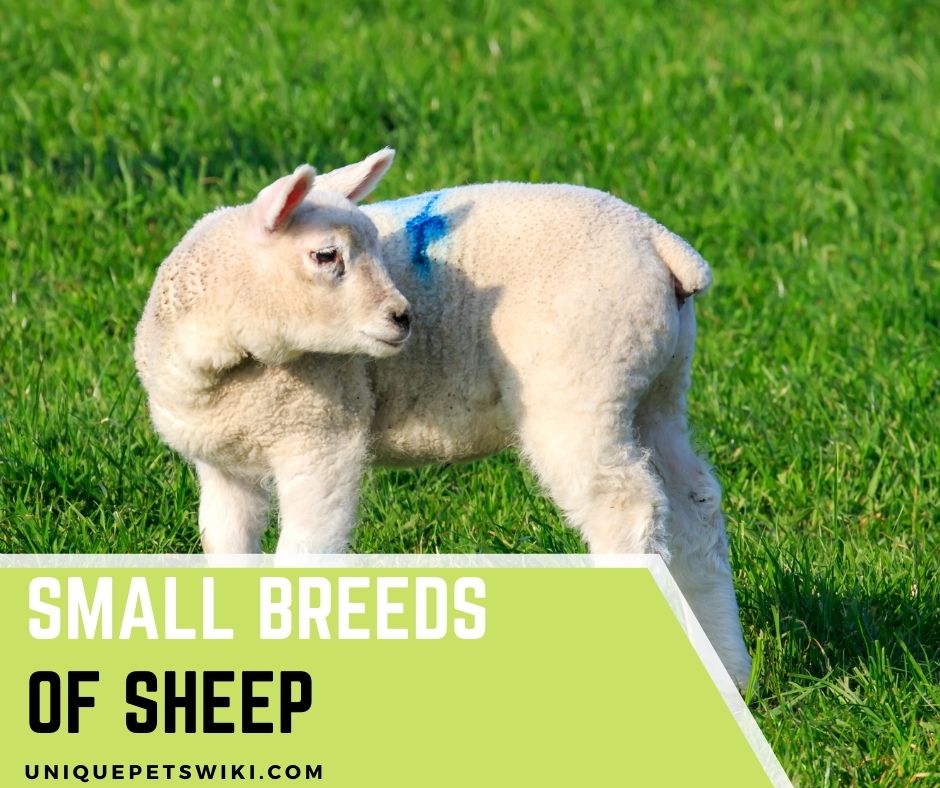To be honest, sheep are not the most popular type of pets on the planet. You must agree that a couple of years ago, nobody imagined sheep would be useful as companions, and not just for meat and wool. However, that is not the case anymore.
Can sheep make good pets? The truth is that sheep can make amazing pets for you and your family. Not only are sheep easy to handle, but they’re also docile which are some of the qualities that great pets exhibit. Unfortunately, most sheep breeds tend to grow into large animals making them less desirable as pets.
Nonetheless, there are some sheep breeds that will stay small even when fully grown. Hence, you don’t have to worry about its size as the animal grows.
That said, this article aims to give you a list of small breeds of sheep that you can choose from. Also included in this article are certain things you have to consider before you choose any breed of sheep as a pet and how you want to handle a sheep as a pet.
Let’s delve into the article in detail.
Contents
What are small Sheep Breeds?
As you might already know, sheep can get extremely big, some of them growing to over 300 pounds when fully grown. This is one of the main reasons they are kept in farms for other purposes such as their wool.
Fortunately, there are smaller breeds that one can keep at home as pets. These smaller breeds of sheep aside from being small in size, also have the qualities of a great pet such as being docile.
You should keep in mind that a sheep of average size might be a challenge to keep indoors because it might break your property, knock a child over, or even cause more damage without intention.
Thus, the size might not be a big deal if you intend to keep the sheep outdoors. But if you are talking about keeping him indoors, you have to consider the size strongly.
Several sheep breeds will remain small at their adult ages. Such sheep include:
- Shetliot sheep
- Harlequin sheep
- Cheviot sheep
- Katahdin sheep
- Croix sheep
- Ouessant Sheep
- Shetland sheep
Top 7 Small Sheep Breeds that stay small / you can keep as Pets
In this section, we will highlight everything you need to know about our selected list of sheep that you can keep as pets.
| Small Sheep Breeds | Size | Appearance | Cost |
| Ouessant Sheep | 41 lbs. | Black, white, brown | $450 |
| Shetliot Sheep | 120 lbs. | Black, white, black, and white | $500 – $700 |
| Shetland Sheep | 125 lbs. | Black, brown | $400 – $600 |
| Harlequin Sheep | 150 lbs. | Light grey, Dark cocoa brown | $500 – $1200 |
| St. Croix Sheep | 165 lbs. | White, black, white, and brown | $350 |
| Katahdin Sheep | 180 lbs. | White | $500 |
| Cheviot Sheep | 200 lbs. | White, black, and white | $500 – $800. |
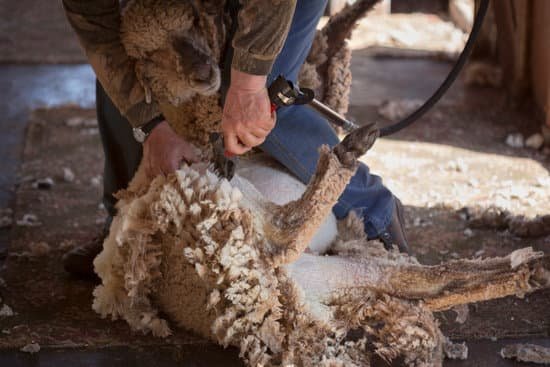
1. Shetliot Sheep
This breed is known for its amazing personality.
Nobody knows for sure where shetliot sheep breeds are from, or the exact year they started being bred by farmers. However, we know for a fact that they are a result of breeding between the Shetland sheep and the Cheviot breed.
An adult usually grows to around 125 pounds.
One physical character people love about this breed is the dense coat that might be in black or white or even a mixture of both.
The sheep is not only calm but also very friendly with family and other sheep breeds around them. You can keep a lamb in the house, but you can expect some sort of excitement and need to jump around. It might be fun to watch, but there are chances of messing up the house.
Caring for this breed of sheep is not such a problem. As long as there is grass around your environment, you can expect her to be perfectly fine.
2. Harlequin Sheep
This blue-eyed breed is calm and extremely adorable.
Harlequin sheep are not an old breed. The first of the breed came to being less than 50 years ago. Then, the breed started being bred in the United States.
This sheep breed will usually grow to around 150 pounds for rams.
Their blue eyes are indeed very popular. But they also have medium wool that is quite similar to babydolls. They have wool with a dark shade of cocoa brown, but it can still be light grey.
You should also know that this breed is popular for being calm and cautious. This breed does not have any horns, which means they will not inflict injuries even by accident. However, they would be a great choice for children or seniors.
The breed appreciates some fresh grass for their meals. Additionally, cutting the wool short around two times a year would be a great addition to the care plan.
3. Cheviot Sheep
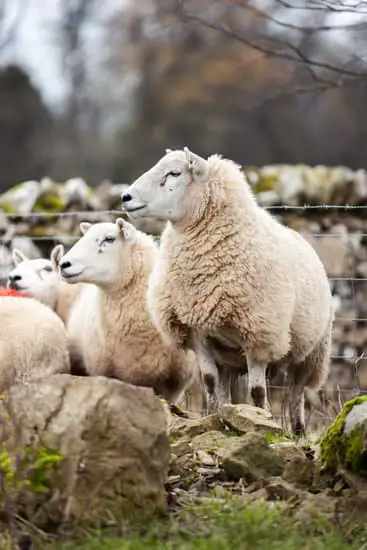
Cheviots are naturally calm and friendly.
These sheep are originally from Britain, and they have been in existence for hundreds of years. Their amazing ability to adapt to different conditions allows them to be moved to different parts of the world for sale, which is why they are now widespread worldwide.
Cheviot adults usually get to a maximum weight of 200 pounds.
The superior wool fiber is one of the reasons for their beauty. This wool might be a solid white, even though there are those with black and white colors.
Naturally, these are polled sheep. Take that and combine it with an amazingly calm personality. They are simply the perfect breed for your homestead. They are gentle with kids and seniors. However, you need to supervise them properly.
You have to consider the feeding habits of this breed. Make sure to follow a certain feeding routine for the best health. You should also keep more than one. Sheep are social, and separating them is not a good idea.
4. Katahdin Sheep
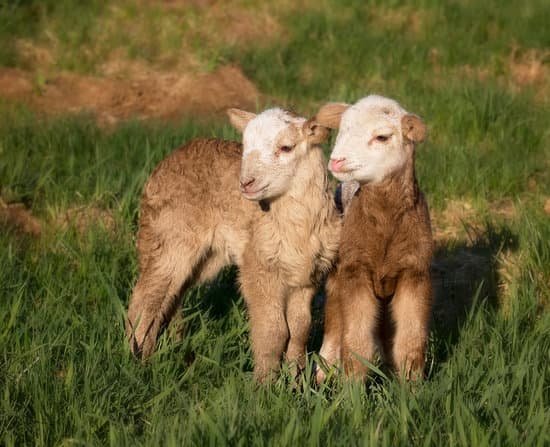
Handling this breed is very easy, mainly because they are docile.
The Katahdin sheep are originally from the United States, where they were created with the intention of grazing power lines meant to be sprayed. The breed has been around since the 1950s.
A full-grown ram will weigh around 200 pounds.
Their short wool has a simple plain white color. It might tend to grow a bit longer when it gets to the colder seasons. After the cold season ends, you can choose to shear the wool.
Katahdin has some moderate instincts when it comes to flocking. Naturally, they are hornless. Therefore, you can be confident that they will rarely exhibit any form of violence. But the rams might be a bit rough, which is why you should keep them away from children and seniors. Nevertheless, damage caused by this breed can be minimal.
The breed is tolerant of external and internal parasites. When you care for the breed adequately, you should not have to deal with parasite treatment. They can tolerate harsh weather conditions, which is why they require very little care and maintenance.
5. St. Croix Sheep
The St. Croix sheep breed is usually very active.
This breed is native to America. However, it is a Caribbean hair sheep, which are mostly developed from West African hair sheep. It is quite old because the inception of this breed can be dated back to the 1600s for livestock and manure.
A St. Croix sheep will grow to a maximum weight of 165 lbs.
The most common color associated with a St. Croix sheep is black, which is one reason for being imported to North America. Nevertheless, you will find some that have brown and white coats, as well as black ones.
This breed does not have any horns. They are therefore gentle even though they are very active. However, they will not harm others.
Normally, the climate of a certain area will not affect the breed as much. They thrive in hot and cold areas, thanks to their dense coats. Additionally, they tend to eat grass. So, as long as it is available in the yard, you should be fine. Their tolerance for parasites also reduces the amount of maintenance work.
6. Ouessant Sheep
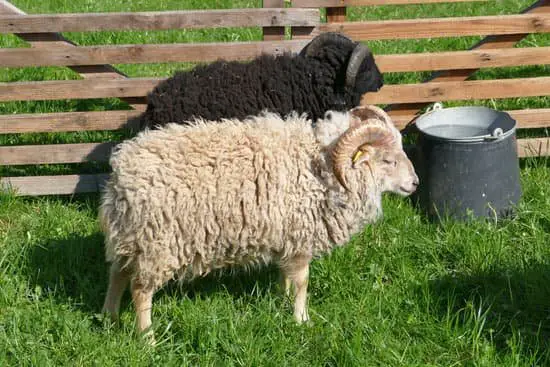
Ouessant sheep are inquisitive, intelligent, and gentle.
The origin of this breed is not set in stone, mainly because there are several origin stories. Nevertheless, one of the most popular tales states that Vikings introduced this breed to the Isle of Ouessant, which was discovered later in the 19th century.
The breed does not grow too tall, with the largest ram growing up to 18 inches with a weight of around 41 lbs.
Usually, the dense undercoat and long wool fleece of this breed are brown, white, or black.
Ewes of this breed naturally do not have any horns, even though the rams have horns that turn outwards. Nevertheless, they are full of character, are gentle, intelligent, and very inquisitive.
Even though they are rare, it does not mean that taking care of one might be a challenge. All you need is to provide some fresh grass, and the sheep will be fine. Additionally, you should constantly check if the sheep has good health or is infested with parasites.
7. Shetland Sheep
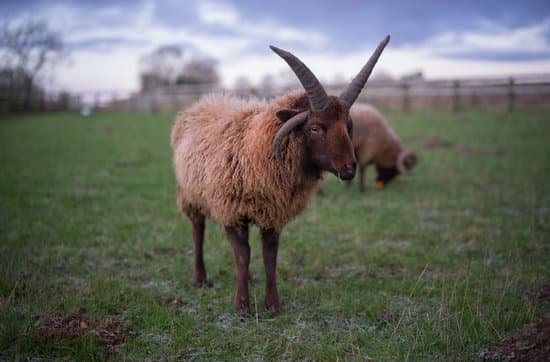
A Shetland is usually small and calm, perfect for a smaller flock.
This breed has been around for more than 1000 years. It is believed that this breed was brought to Shetland by some Viking settlers.
An adult ram will usually weigh around 125 pounds, even though the ewes might weigh about 100 pounds.
The spiral horns on rams make them very appealing to the eye. They also have some dense coats that might be black or brown.
You will notice that this breed is not only docile but also calm and easy to manage. It is also true that they adore attention. It is even known that getting attention makes them wag their tails, especially when petted.
They are hardy naturally and will adapt to new climates and environments without a problem. Therefore, you can expect that this amazing breed will naturally survive regardless of the conditions of the environment. But you should provide a good diet for the best results.
Best Breed to Get for a Pet
Keep in mind that sheep are not exactly like dogs or cats. They have been domesticated as livestock for more than 10,000 years. That means that they might behave differently compared to other types of pets.
When you are looking for a sheep for a pet, you should think about how the sheep behave individually. Indeed, sheep are usually entertaining and gentle.
But at the same time, it is not uncommon to find some that will revert to instincts of being scared and start running or simply attacking each other or other pets.
Avoid any sheep that will run or panic when a human comes close. It is possible that these cannot be trained and would not be good pets.
But that is not all you need to consider before you make a choice. You need to identify whether you want a hair lamb or a wool lamb. Wool lambs need to be shorn each spring.
A wool lamb will usually have its winter wool as summer approaches, which might be a problem. You would then have to get to work and cut it short. Some will even shed every spring.
Is Ewe, Weather, or Ram Best for a Pet?
You have to think about the gender of the sheep. One common thing you will find out from all sheep breeds is that the ewes are smaller compared to rams. A ram, when fully grown and intact, might become aggressive.
The rams might become more aggressive when the breeding season comes. In addition, by the time they mature, they might develop some smell caused by the hormones that they exhume.
In case you choose to get a ram, you might consider castration. A castrated ram is known as weather and generally will not grow to be the full size of an adult ram. In addition, horns will not grow, and they will not become aggressive.
When you get a ewe and a ram, you should expect to start taking care of lamb in a short while. Only choose this option if you want to start a flock.
Apart from keeping a sheep as a pet, you can start a hobby or even a business around it. Sheep are one of the farm animals reared for their fiber (wool) for thousands of years now.
This implies that you can keep some sheep to extract wool from them for commercial purposes. Moreover, you don’t need a large herd of sheep to accomplish this, one or two sheep is enough.
For this purpose, we recommend that you read “Raising Animals for Fiber: Producing Wool from Sheep, Goats, Alpacas, and Rabbits in Your Backyard (CompanionHouse Books) Livestock Health, Grooming, Housing, Breeding, & Shearing, from Angora to Suri”
Last update on 2022-12-31 / Affiliate links / Images from Amazon Product Advertising API
Wrapping Up
Sheep are naturally docile, and managing an entire flock should not be a problem.
But at the same time, there are certain reasons for a sheep to grow up and become something different.
You should do more research on the breed you want to get before getting one. Have fun choosing!
If you’re looking for pet inspirations, we recommend that you browse through our different categories of pet animals such as small horse breeds and other types to learn more about the different types of pet animals.
